
As you saw in lab, the Sun's interior consists of several regions. The core is at the center, and is the site for the nuclear fusion that we discussed last time. This is the location of the energy generation. The energy escapes through the radiative zone, which we do not see, and the convective zone, which we do see at the surface of the Sun (the photosphere). The granules that give the Sun's photosphere a granular appearance are really the tops of convective cells that are trying to transport the energy from the Sun's interior outward.

How can we study the interior of the Sun if we cannot see very far down into it? We can study the surface by studying the granulation. Here are some real-time movies of the solar granulation. There is a 3-D animation here. We can also study the interior with a concept known as helioseismology. Studying the pulsations of the Sun gives us information about the interior structure and the boundaries of the various layers.
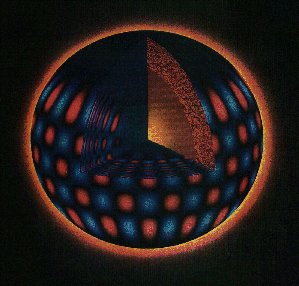
The lowest part of the Sun's atmosphere is known as the photosphere. It is the densest part of the Sun's atmosphere, so this is what we see. It is one of the coolest parts of the Sun, with a temperature of only 6,000 K.
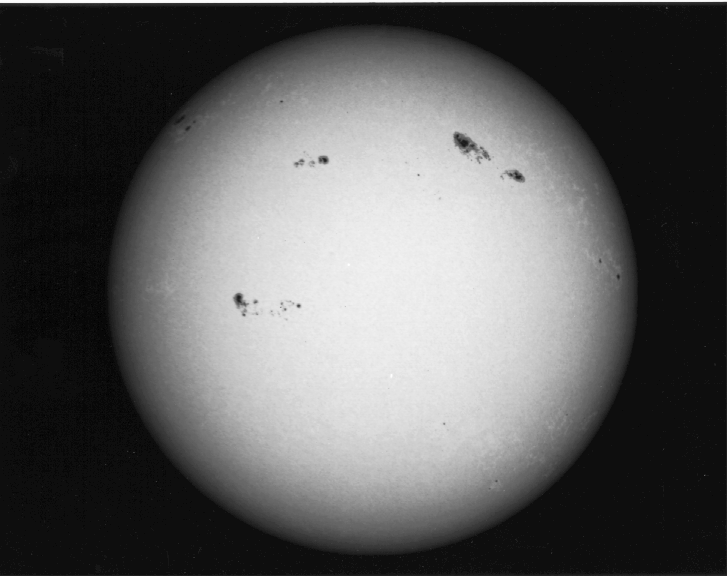
Image courtesy of National Solar Observatory.
Above the Sun's photosphere is the chromosphere ("chromo-" means color). This is a thin layer (only 2,500 km thick, compared to the Sun's diameter of 1.39 x 106 km), which is pinkish in color due to the hydrogen gas that emits light in that color. It is normally not visible because of the overwhelming brightness of the photosphere, but the chromosphere can be seen during a total solar eclipse.
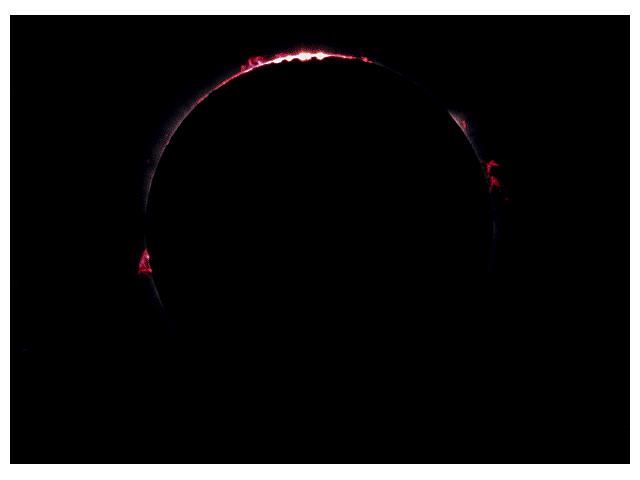
Image courtesy of National Solar Observatory.
The outermost region of the Sun's atmosphere is the corona, ("crown"), which is quite thin but contains very hot gas. Like the chromosphere, the corona is best studied during solar eclipses (real or artificial).
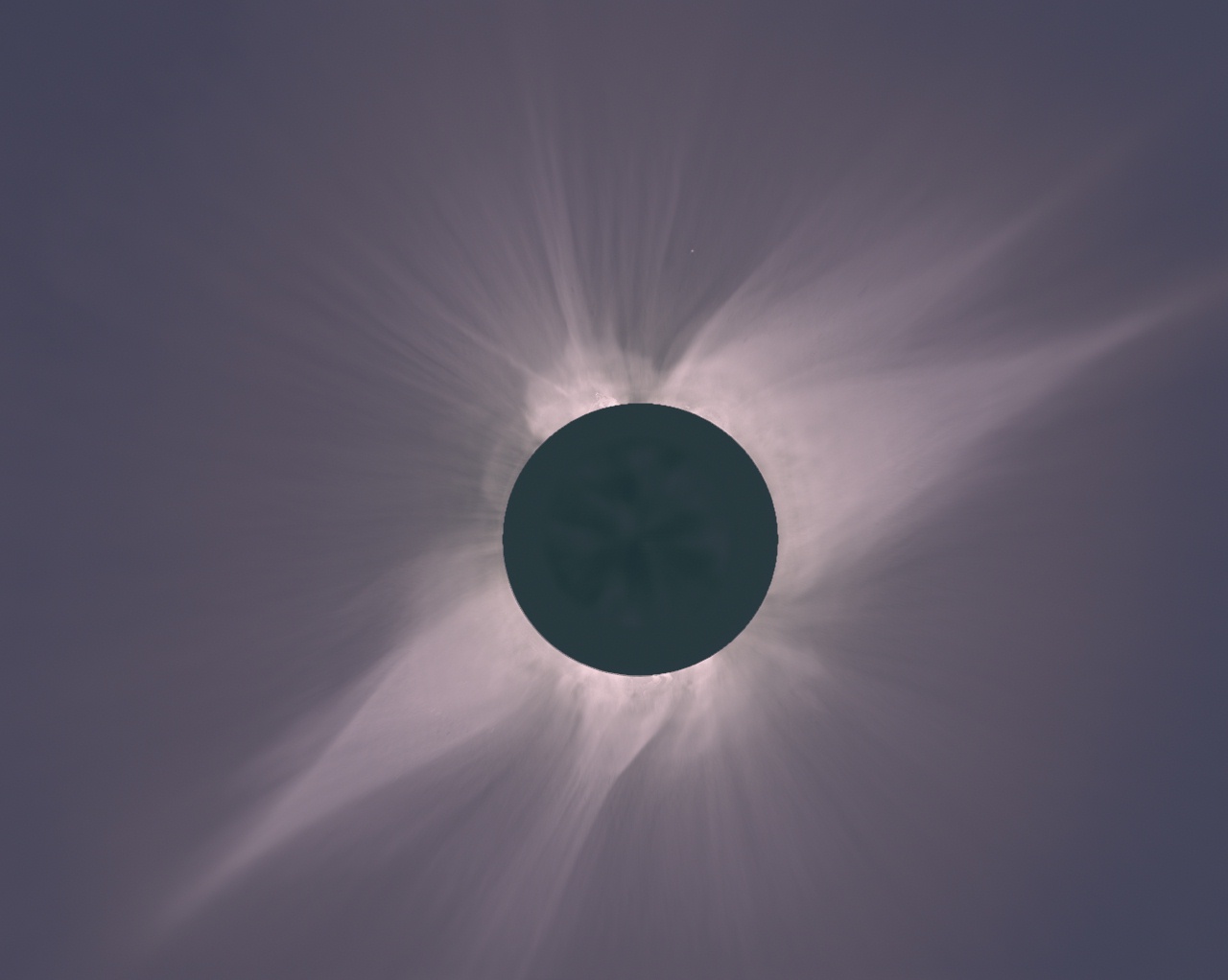
Image from http://www.solarviews.com/cap/sun/eclips91.htm
The temperature of the corona reaches millions of degrees. What portion of the electromagnetic spectrum do you think it emits much of its energy in?
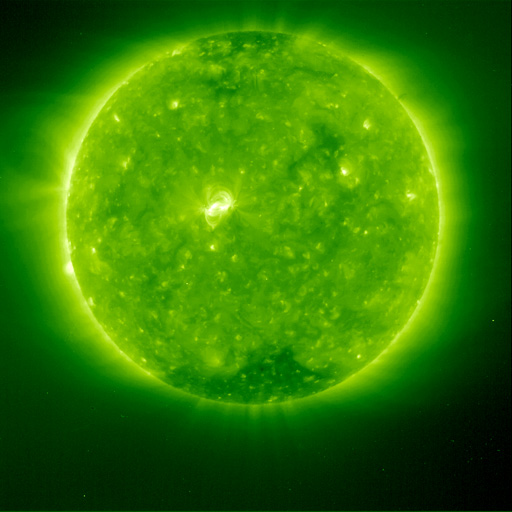
SOHO image courtesy of ESA/NASA.
A coronal loop is an arch of extremely hot gas seen in the corona. Its shape results from the Sun's strong magnetic field, which forms loops.

SOHO image courtesy of ESA/NASA.
One of most obvious sign of activity on the Sun is sunspots, which are regions of gas that are cooler than their surroundings (this is why they are darker relative to their surroundings). Sunspots have lifetimes of a few hours to a few months, and they often are found in groups. They can grow to be many times larger than the size of the Earth. They were used by earlier astronomers to measure the Sun's rotation rate; by tracking the sunspots as they move across the disk of the Sun, the rotation rate can be measured.
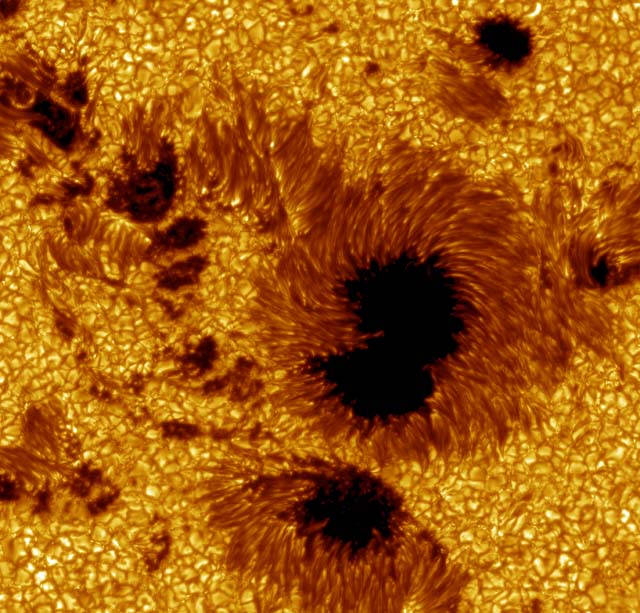
Image courtesy of the Royal Swedish Academy of Sciences
The number of sunspots varies over an 11-year cycle. The cause for this cyclical variation is still not understood.
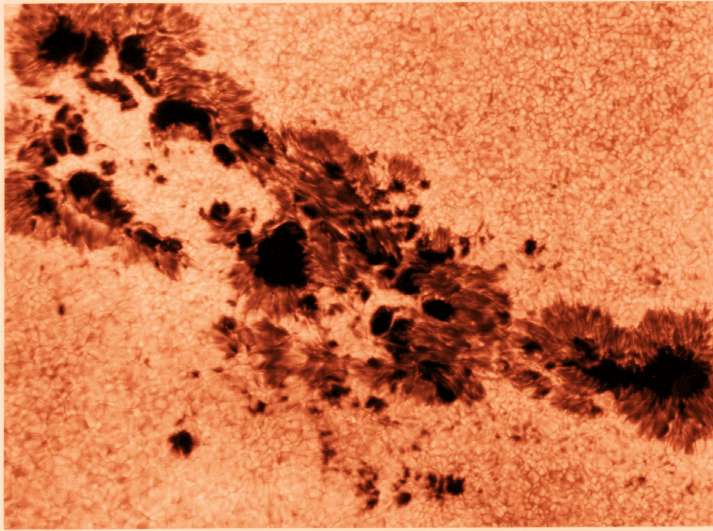
Image courtesy of National Solar Observatory.
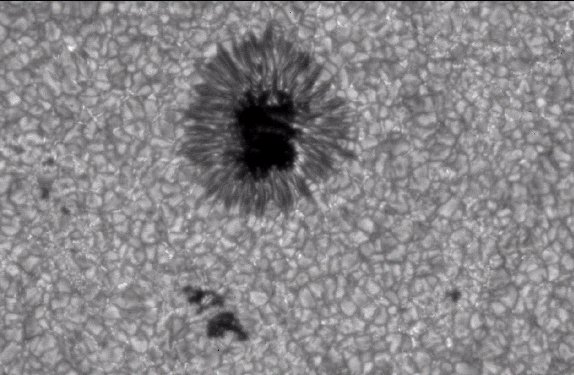
Image courtesy of R. Shine, Lockheed Martin Corporation.
The number of sunspots is directly related to the amount of solar activity that is taking place at any given time. The amount of solar activity can be determined by looking at a magnetogram, which shows regions where the magnetic field is enhanced (either strongly positive or strongly negative).
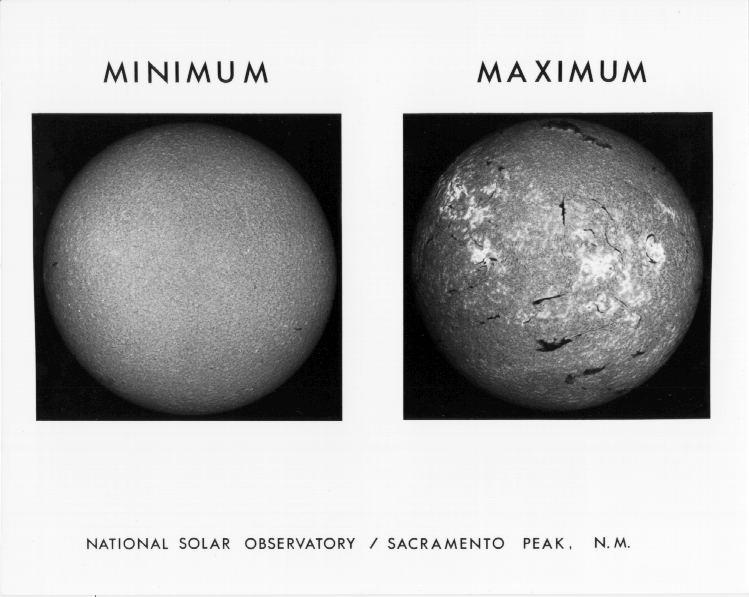
Image courtesy of National Solar Observatory.
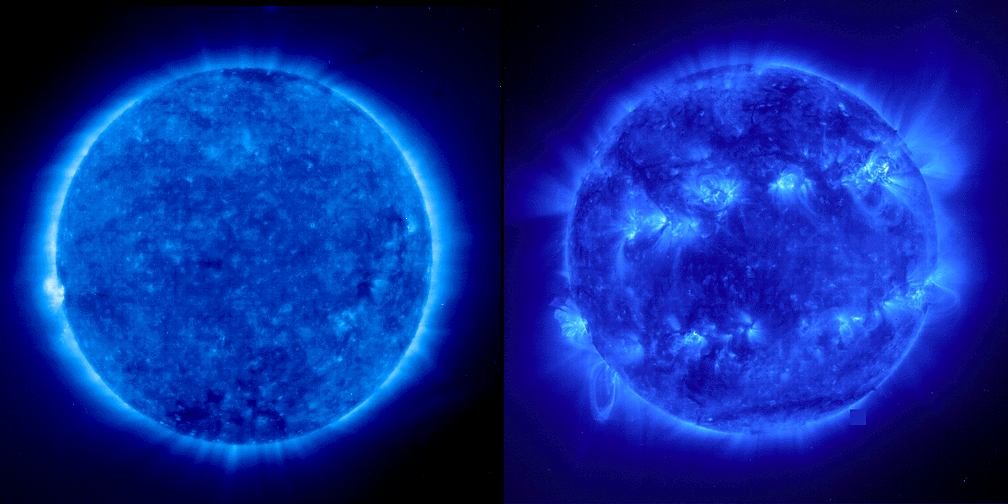
SOHO image courtesy of NASA/ESA.
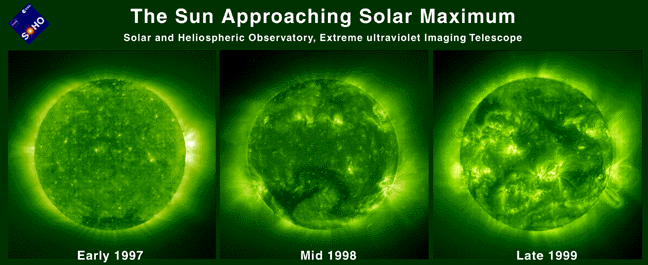
SOHO image courtesy of NASA/ESA.
Another form of solar activity is a solar flare. These are short-lived, sudden increases in brightness that occur near sunspots and release a tremendous amount of energy.
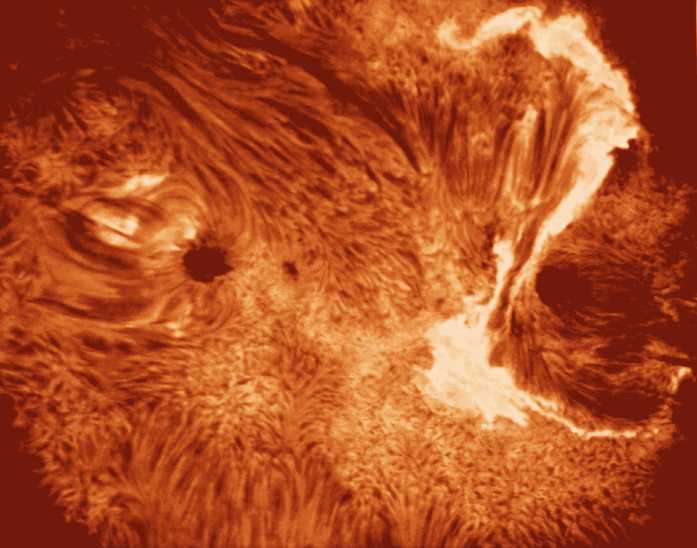
Image courtesy of National Solar Observatory.
A solar prominence is another form of eruptive activity, which can reach high into the corona. Prominences are huge clouds of relatively cool dense plasma suspended in the Sun's hot, thin corona. At times, they can erupt, escaping the Sun's atmosphere.
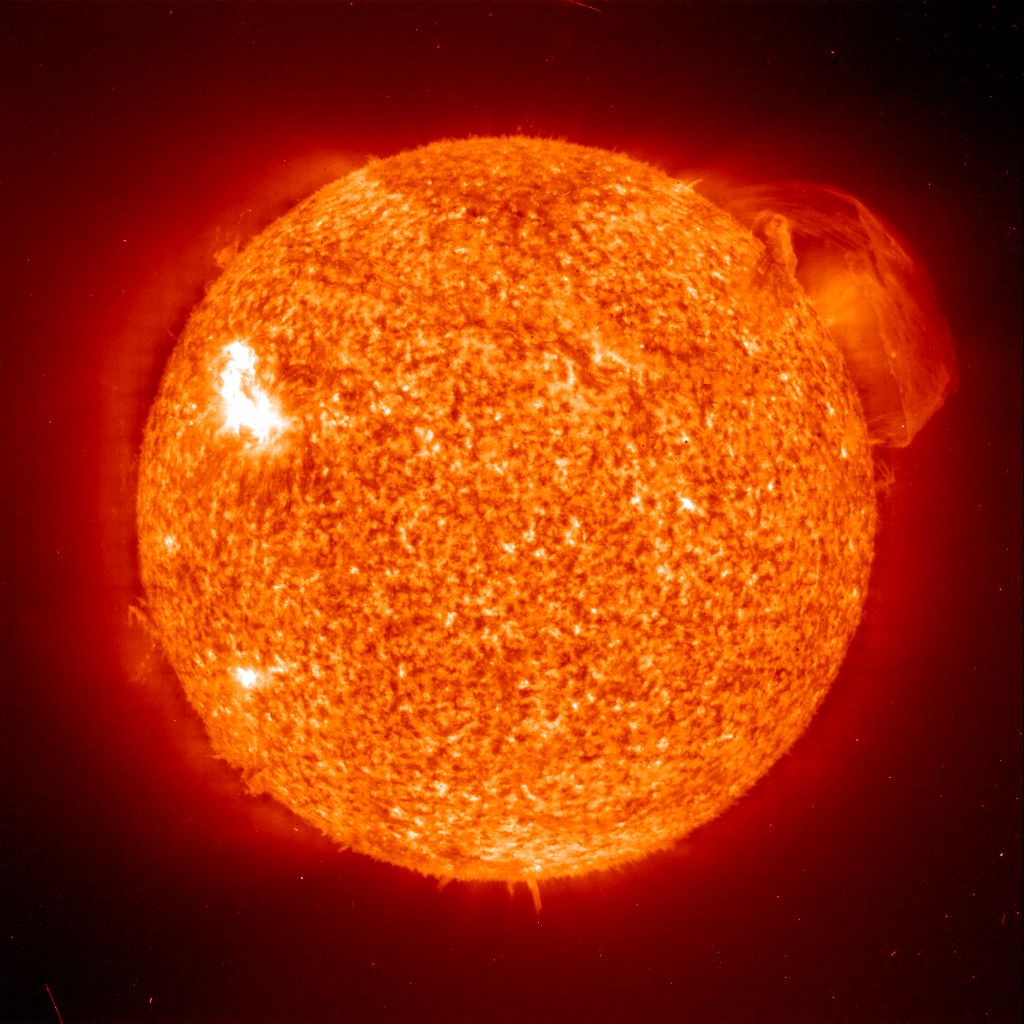
SOHO image courtesy of ESA/NASA.

SOHO image courtesy of ESA/NASA.
Finally, a coronal mass ejection releases a huge amount of material from the corona into interplanetary space. Here is a movie of a CME as observed by the SOHO spacecraft.
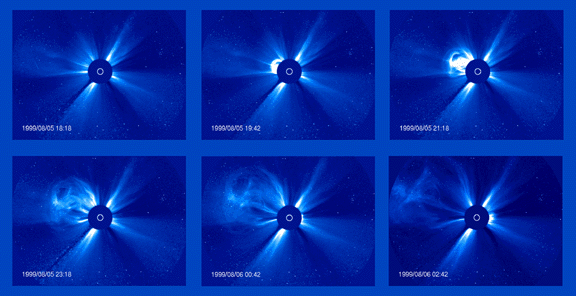
SOHO image courtesy of NASA/ESA. These images were taken on 5-6 August 1999.
Aside from these episodic outbursts from the Sun, which can be extremely powerful, there is a more steady stream of particles coming from the Sun, known as the solar wind. A potential source of these particles is the large plumes of material, seen leaving the Sun in the images below. The images show the magnetic field near the Sun's south pole (top), the million-degree plumes, and the more "quiet" Sun closer to the photosphere.
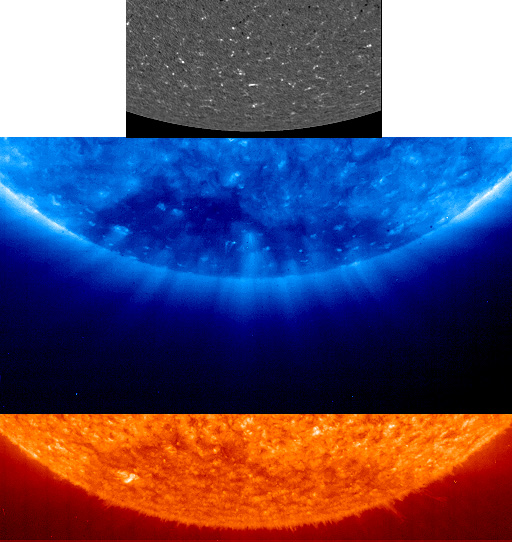
SOHO image courtesy of NASA/ESA.
All of this solar activity is responsible for space weather, which can affect our lives here on Earth (aurora, satellite communications, International Space Station, etc.). You can check your daily Space Weather forecast here.

Image courtesy of NASA/ESA. The white lines represent the solar wind, the blue lines represent the Earth's magnetosphere, and the purple line is the bow shock (the interface between the two).
Finally, we can put this all together into a single image to remind ourselves of the various aspects of the Sun we've talked about today:

Image courtesy of NASA/ESA.